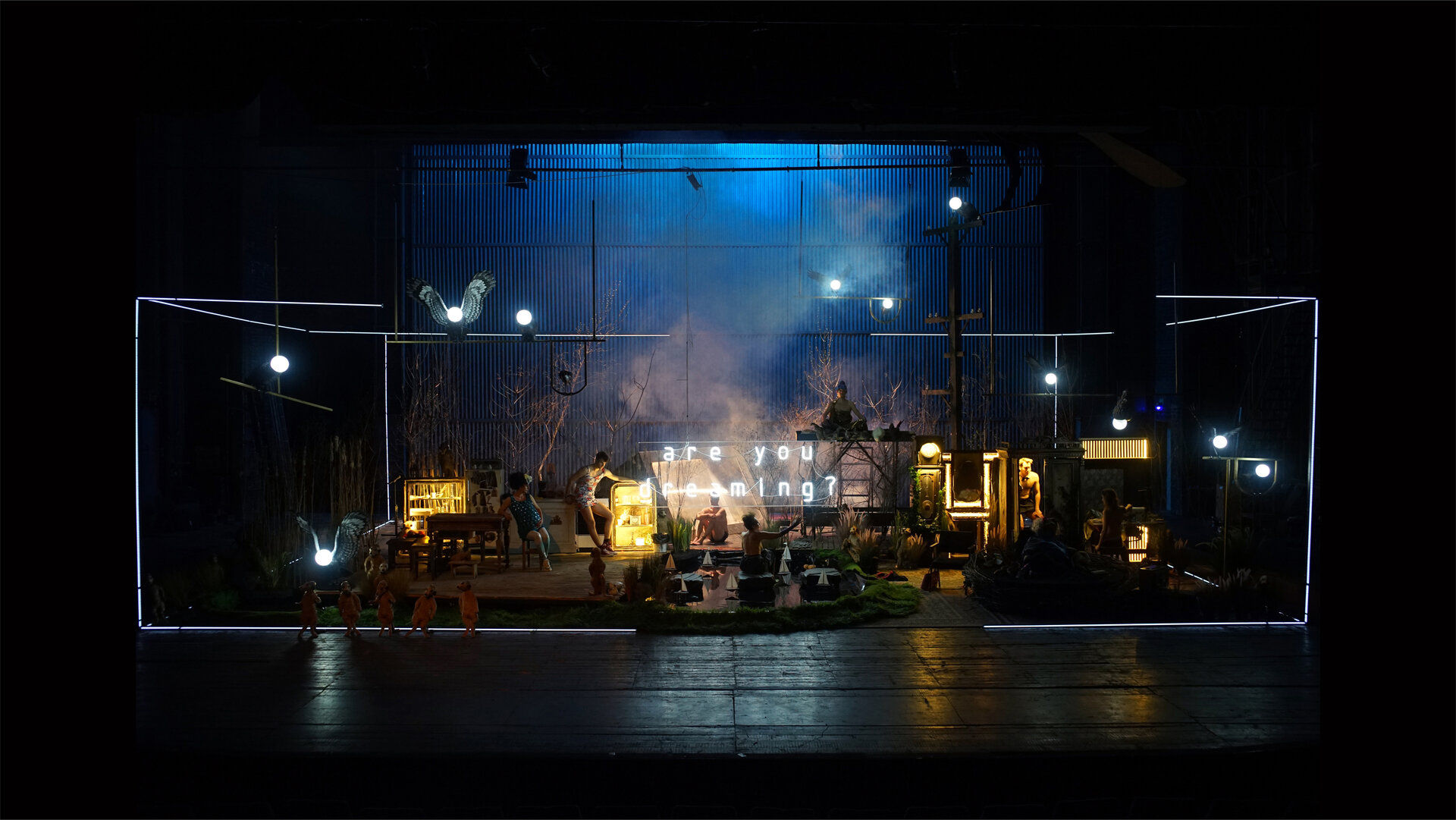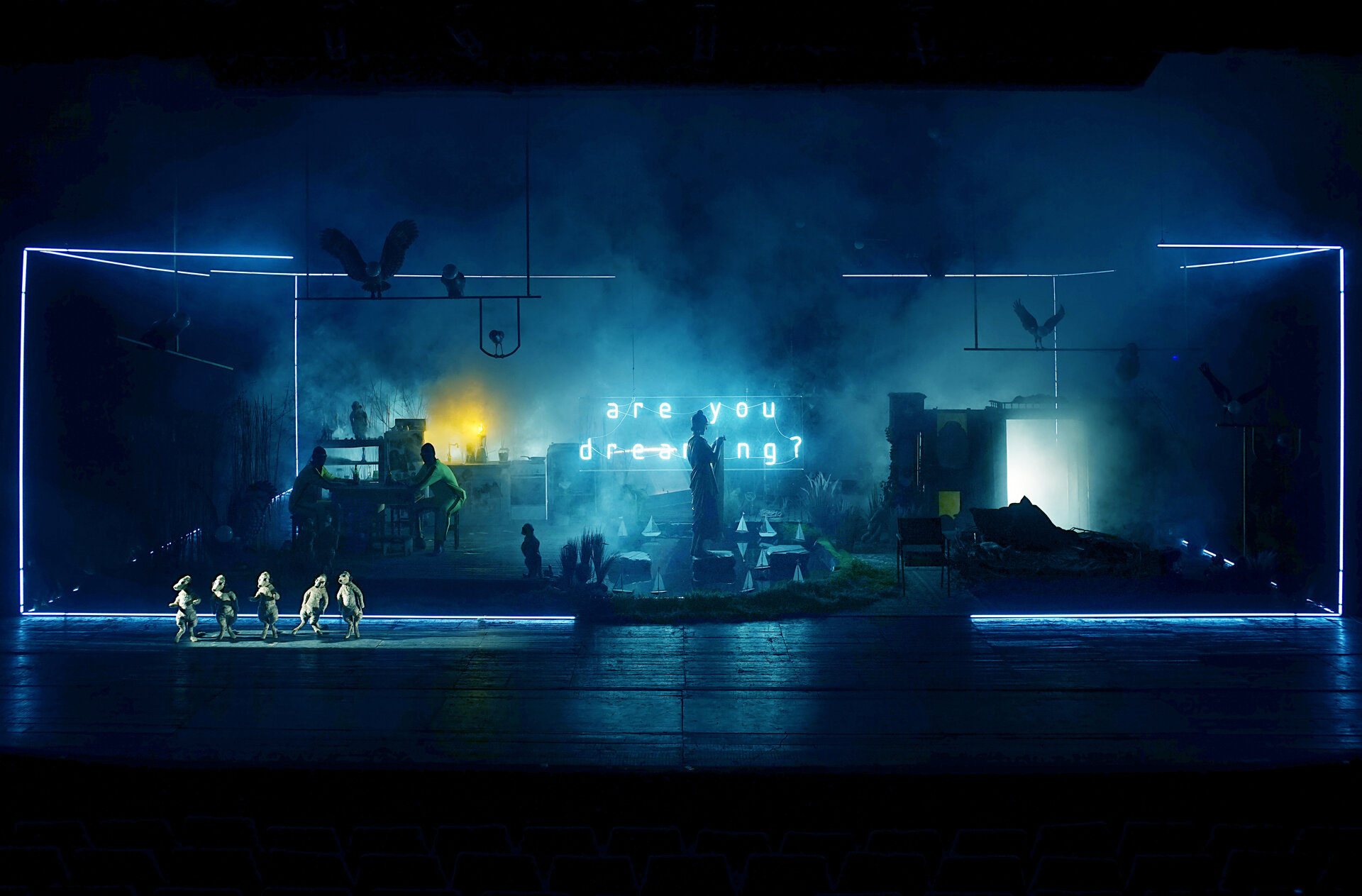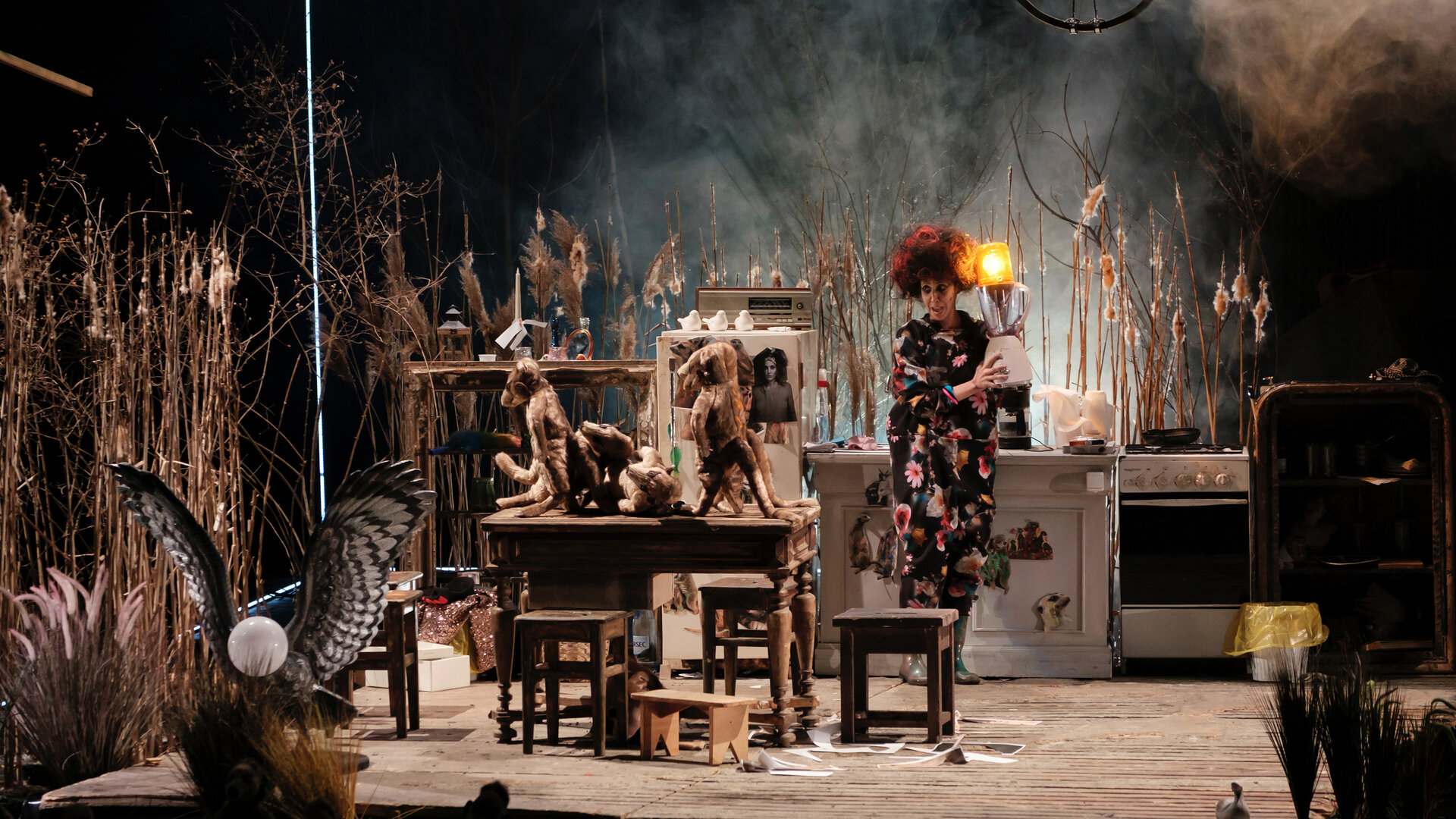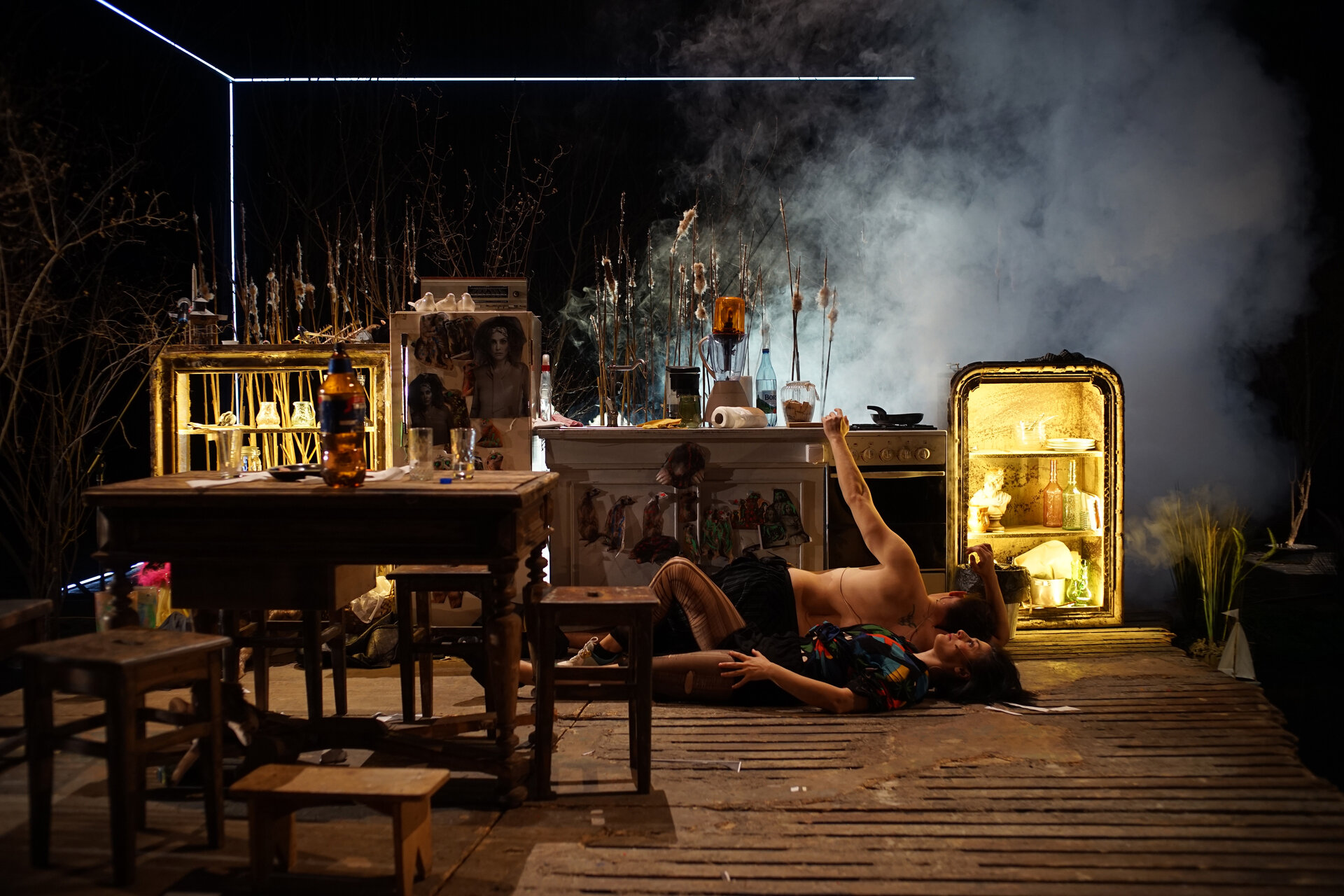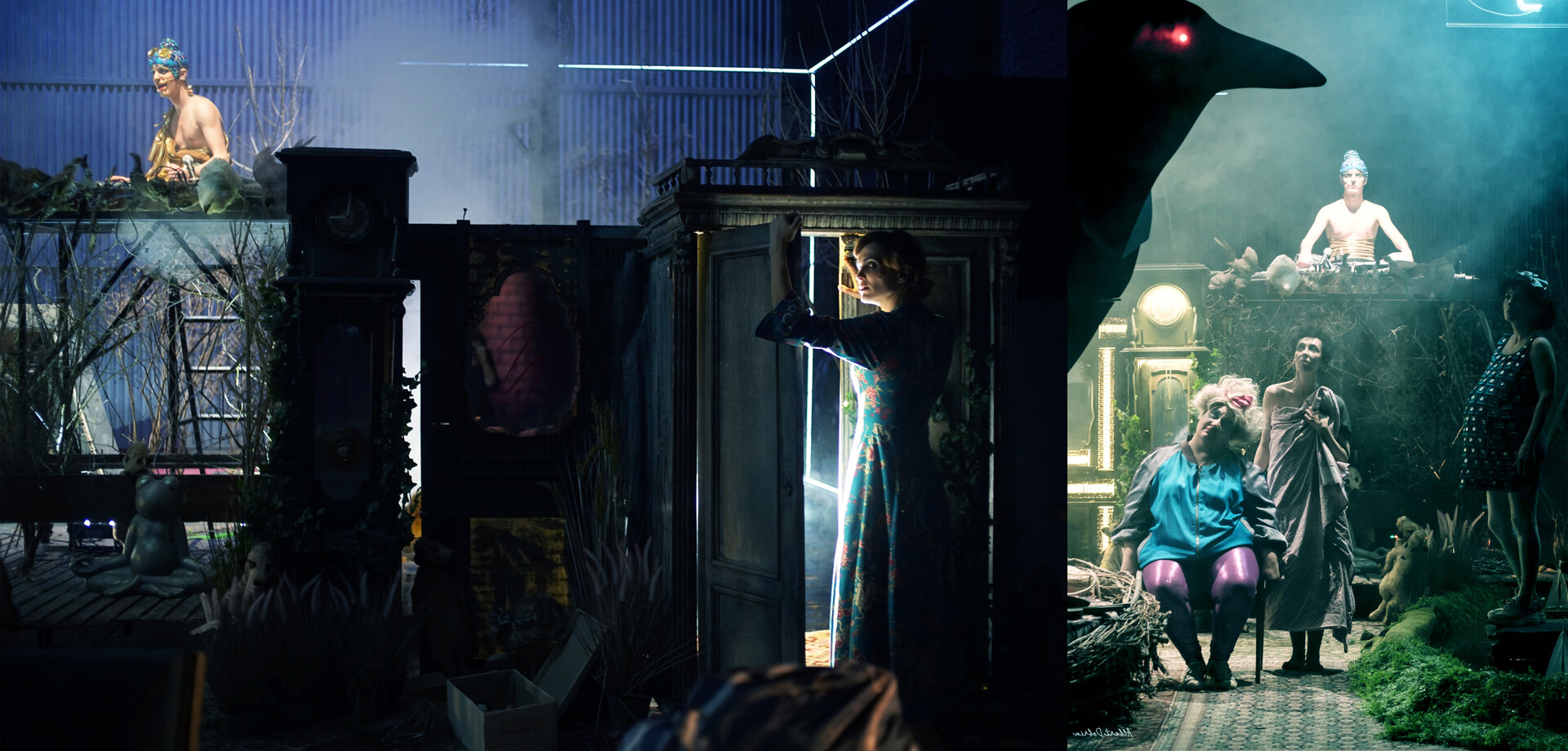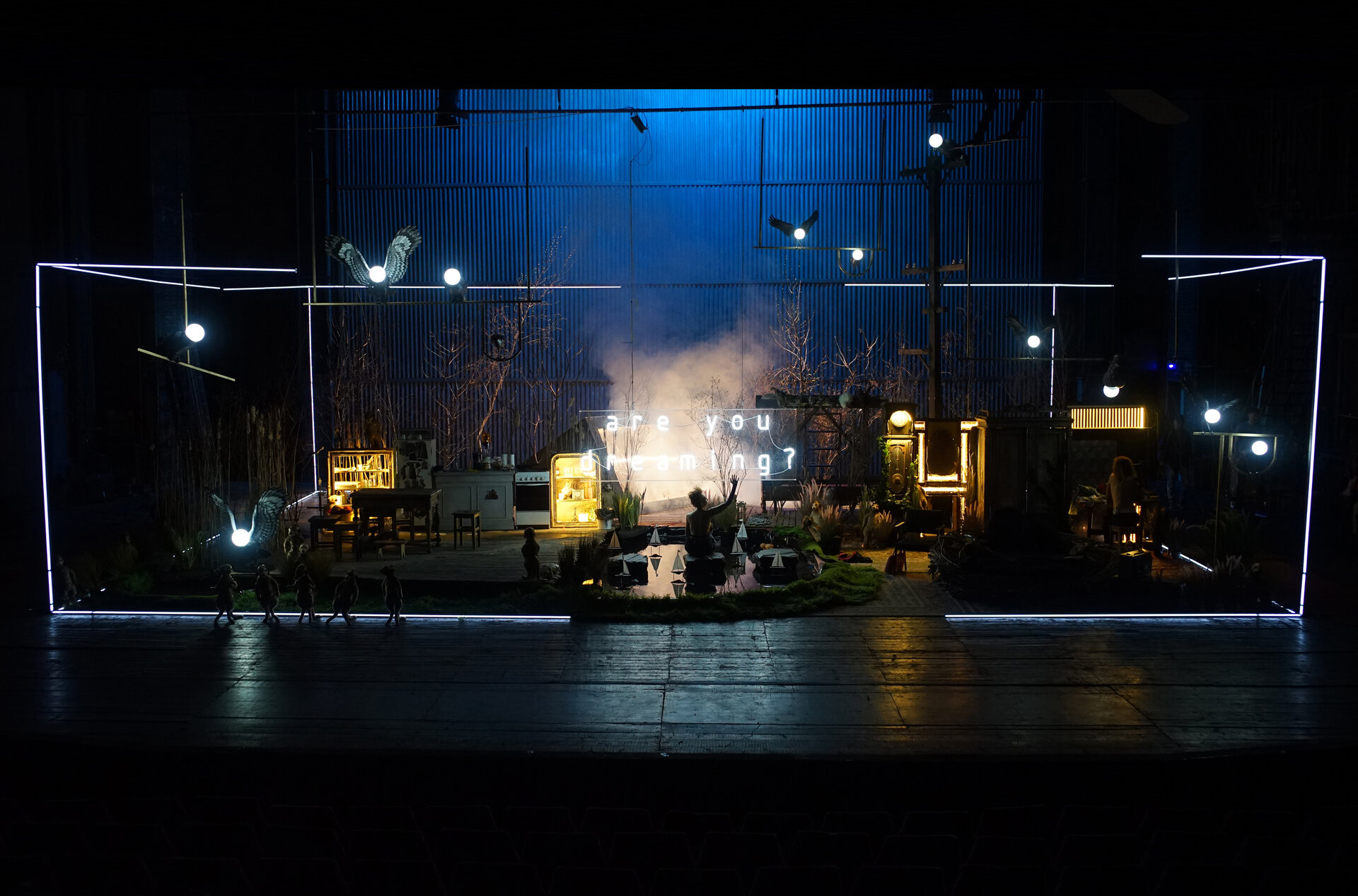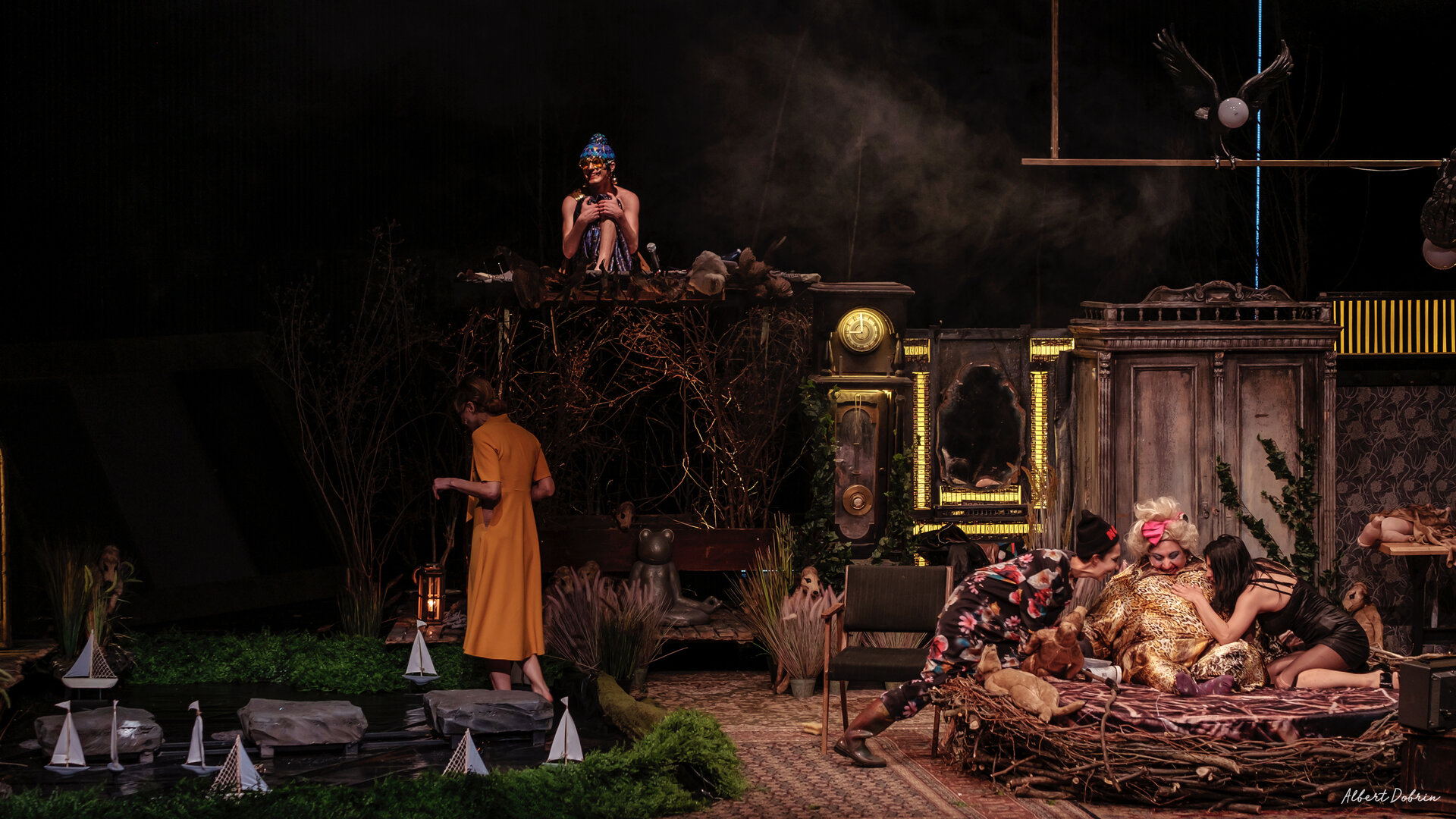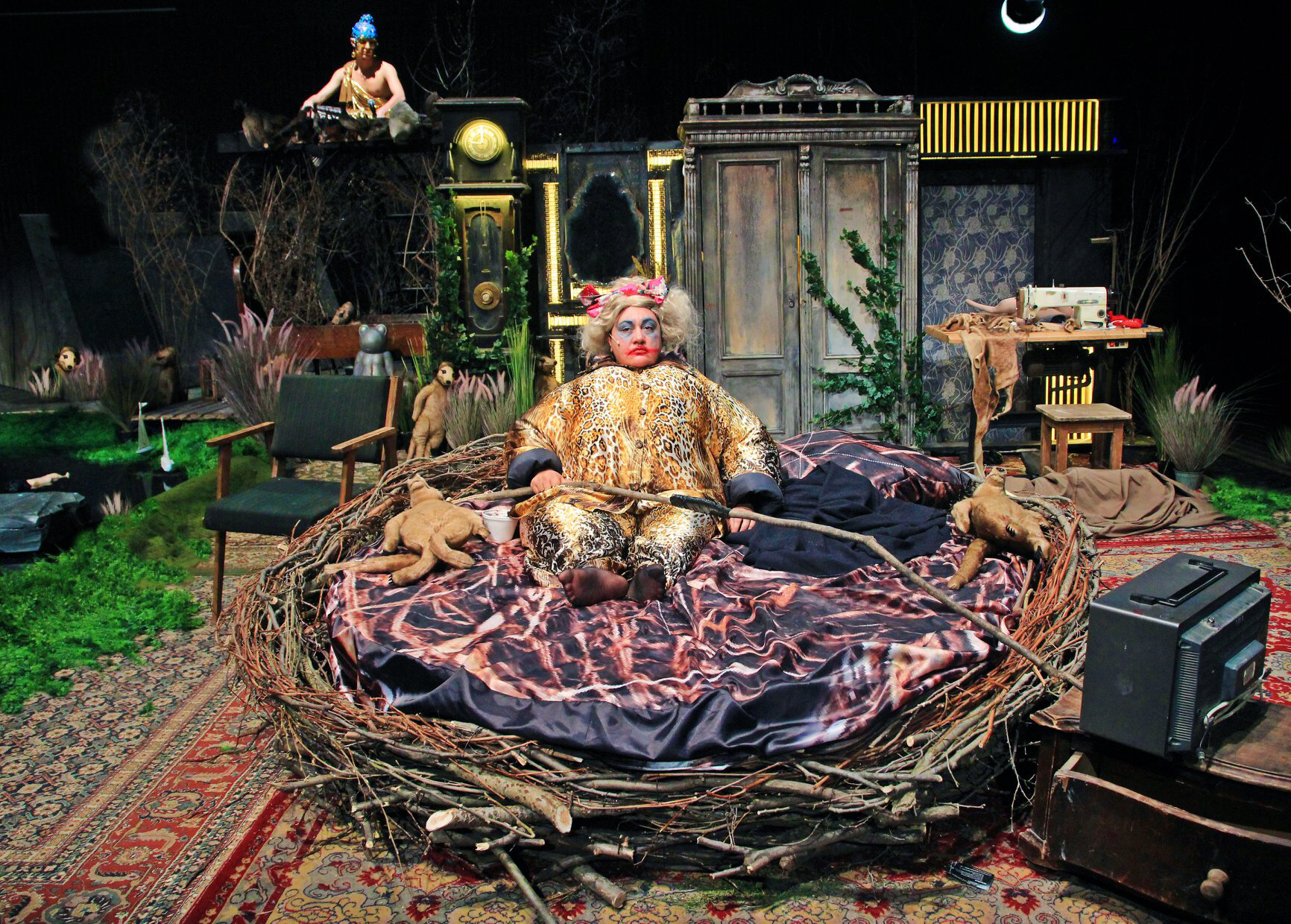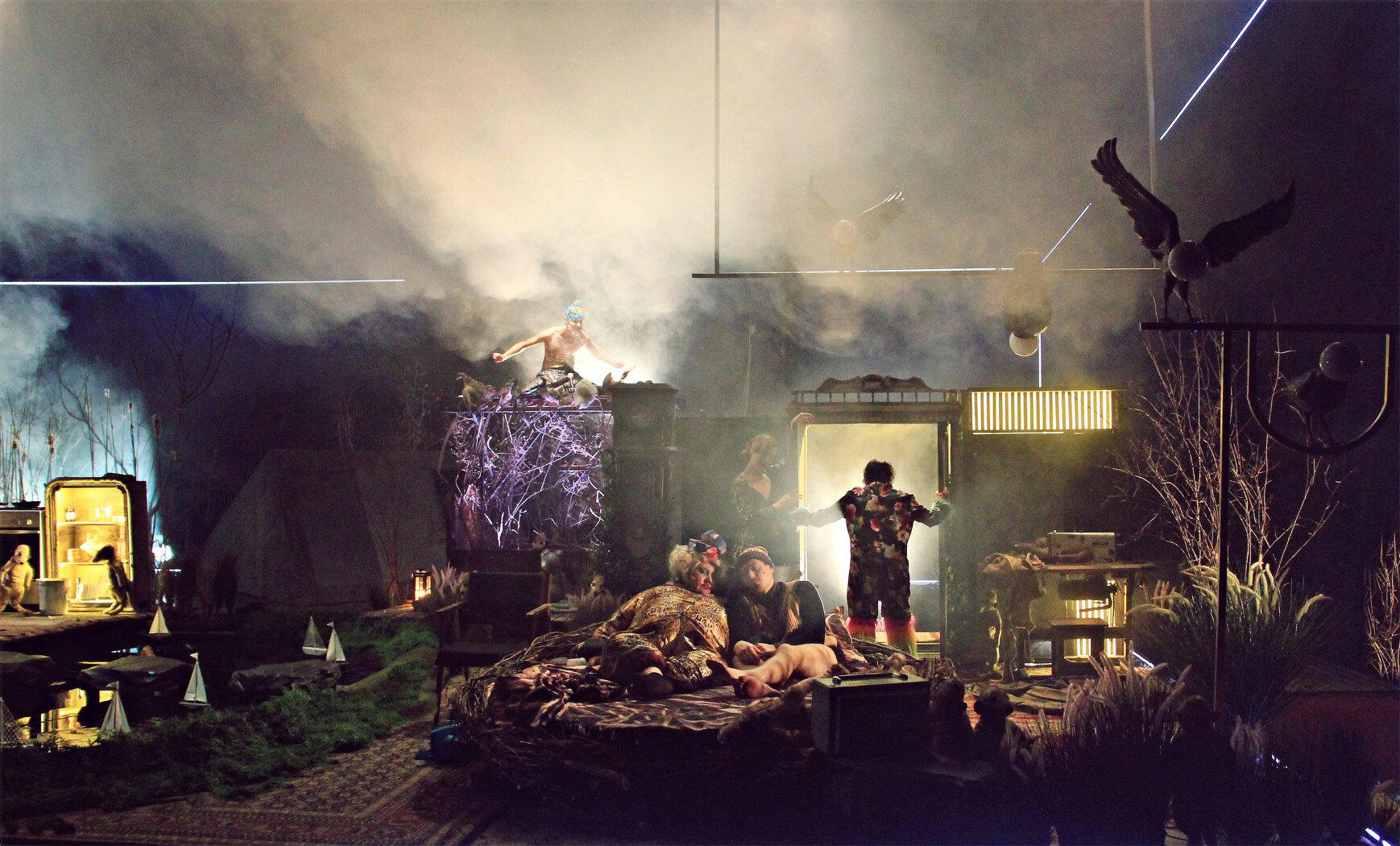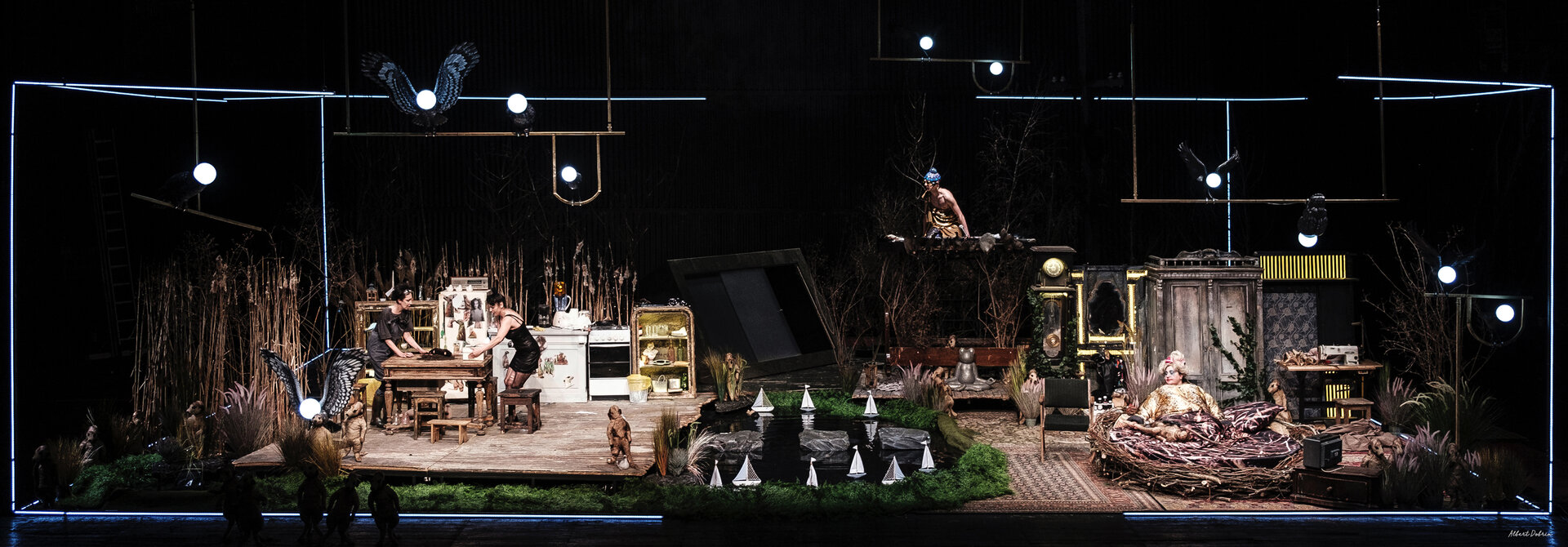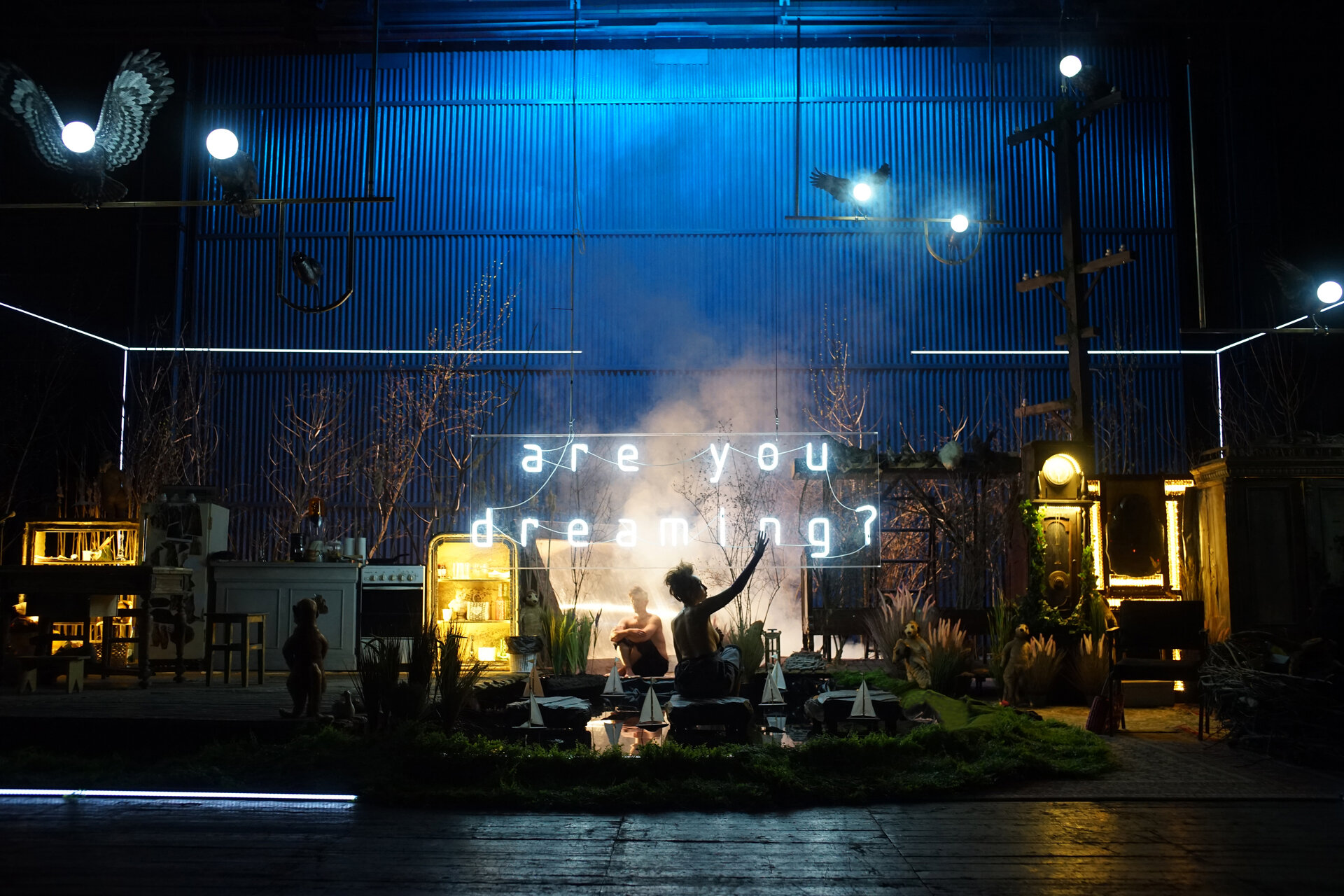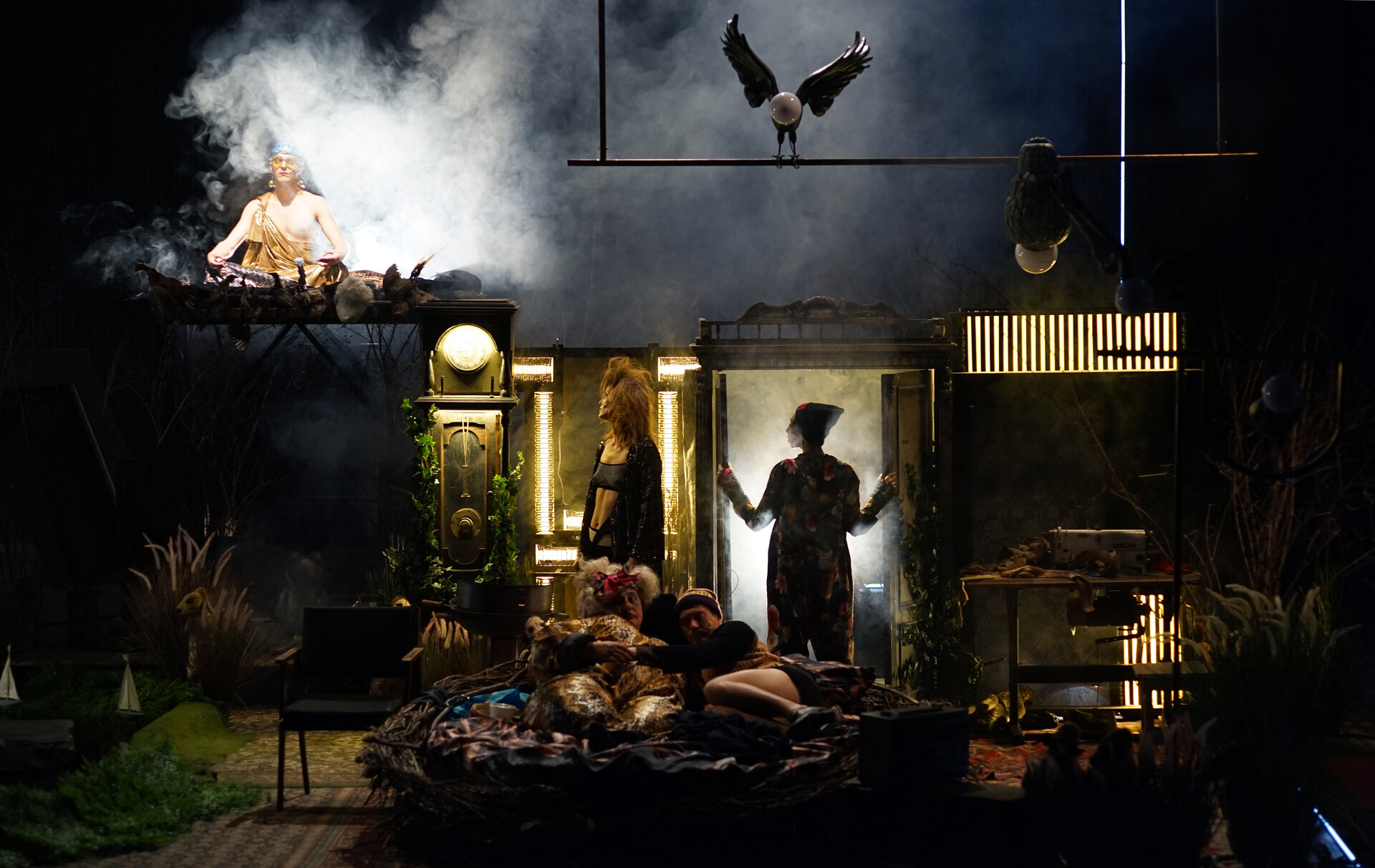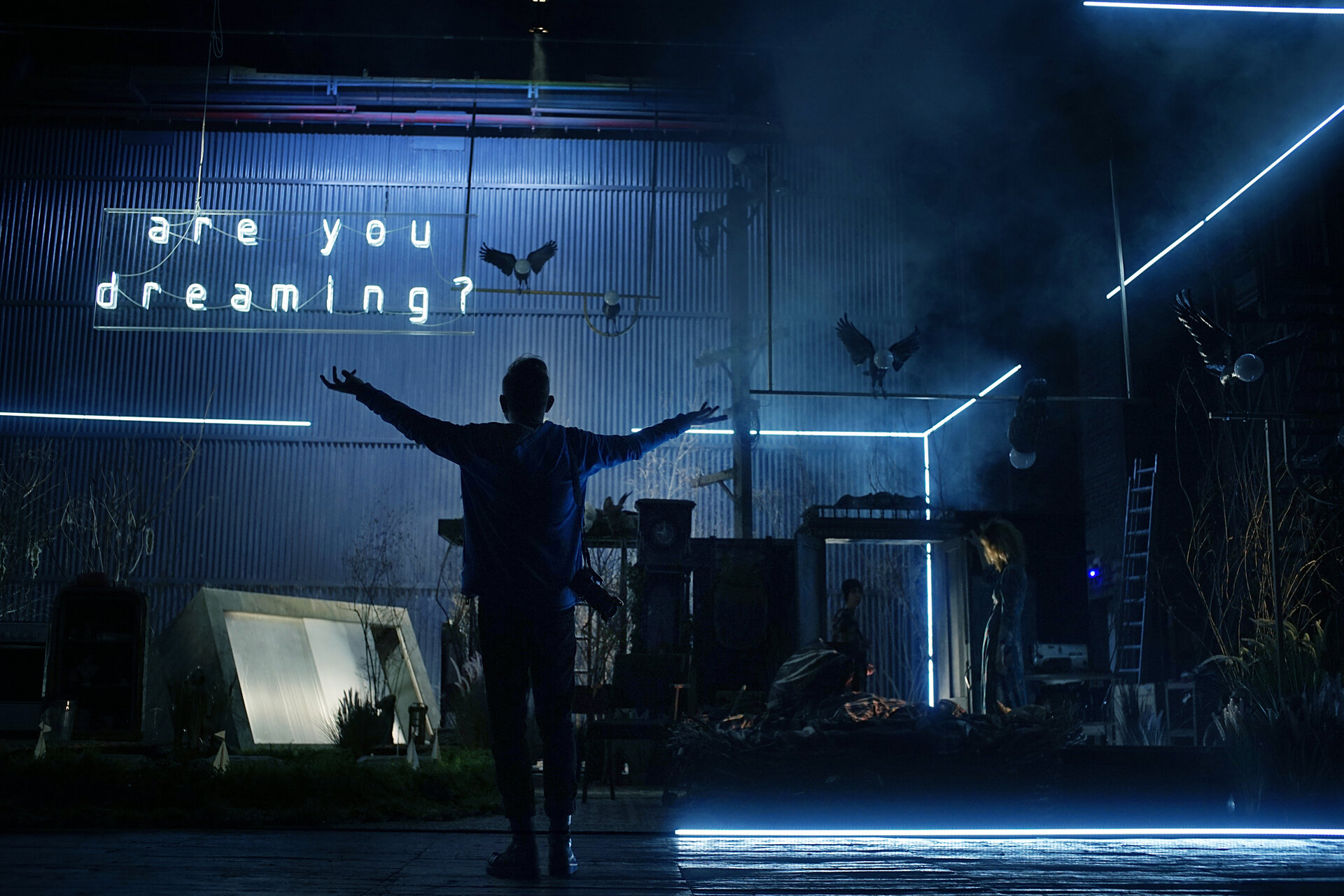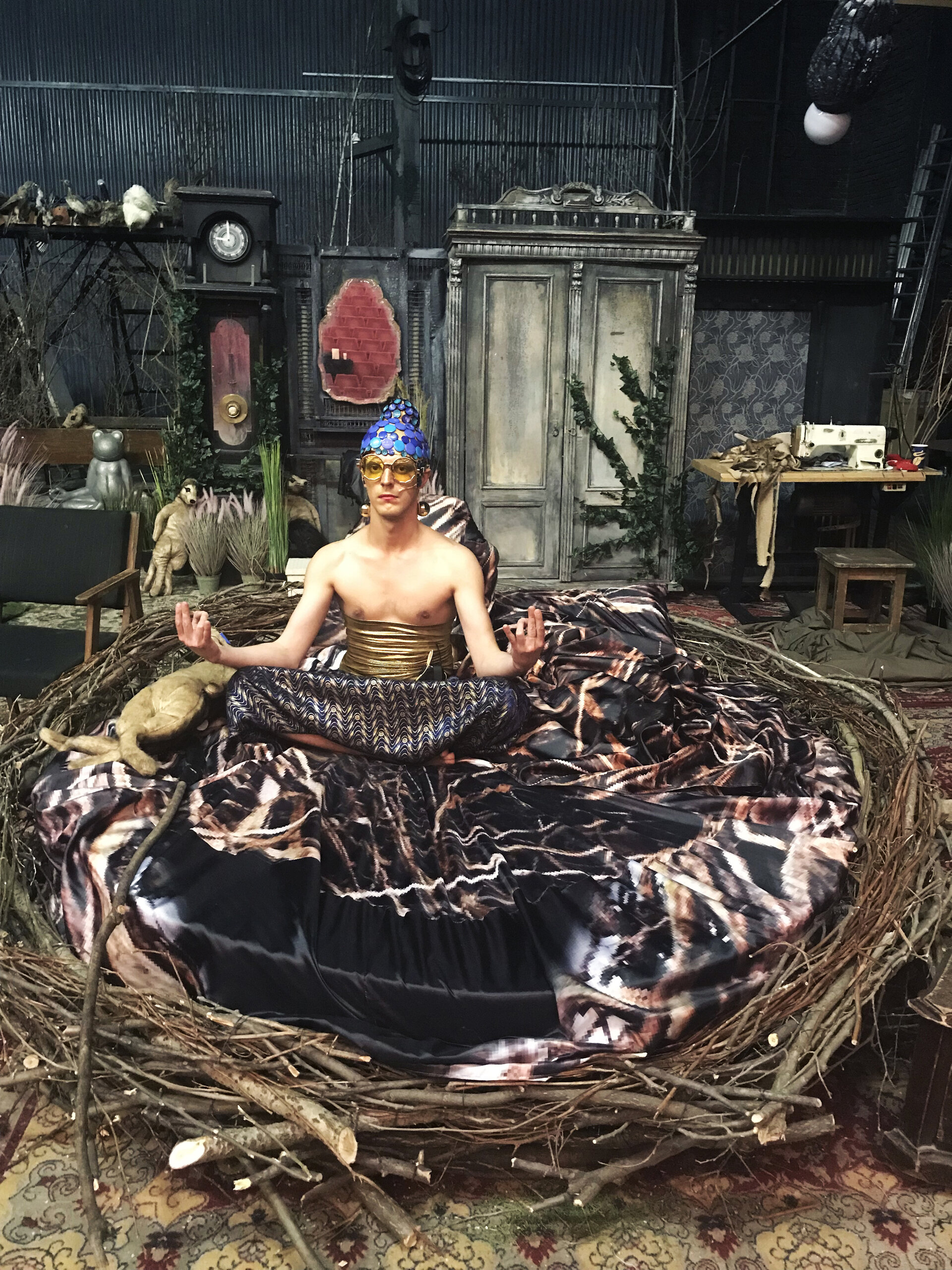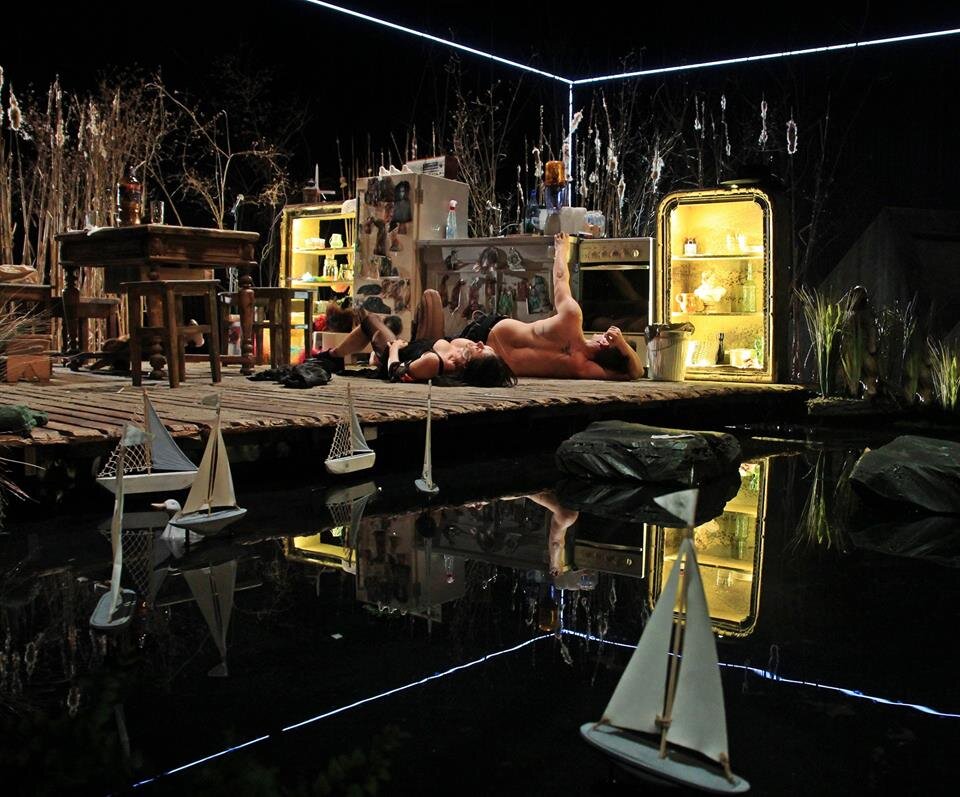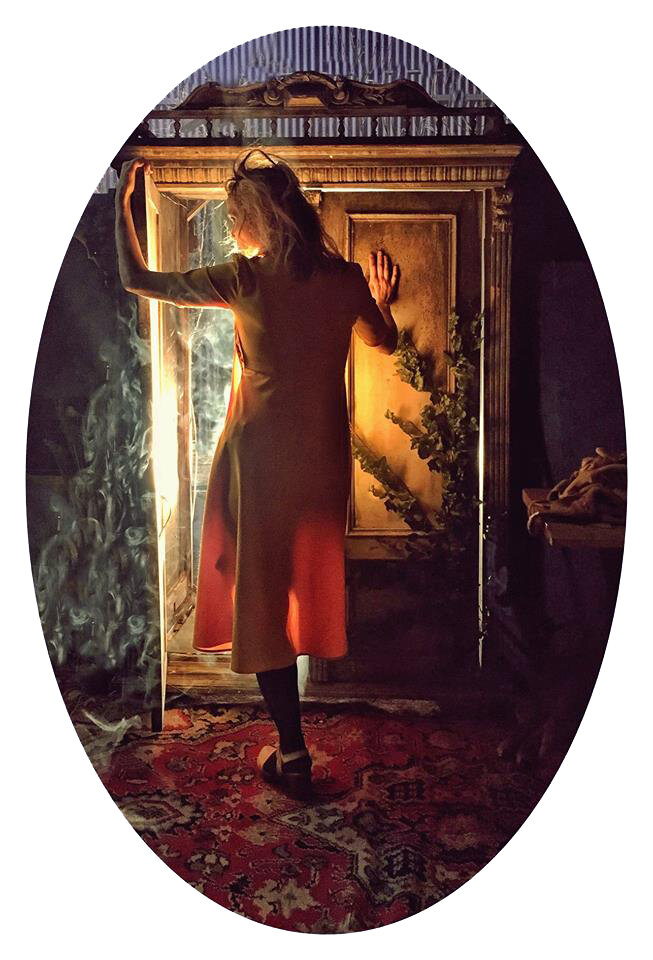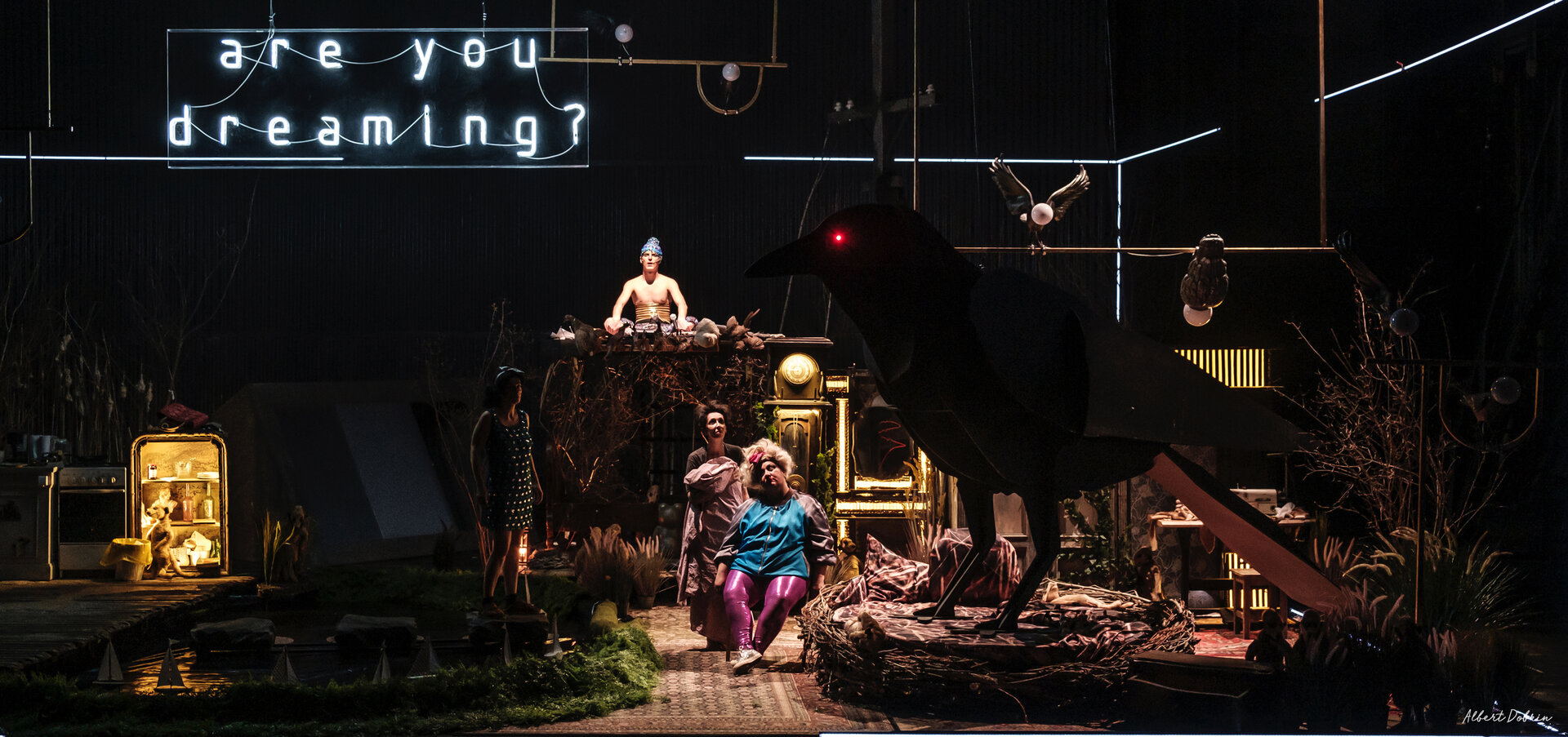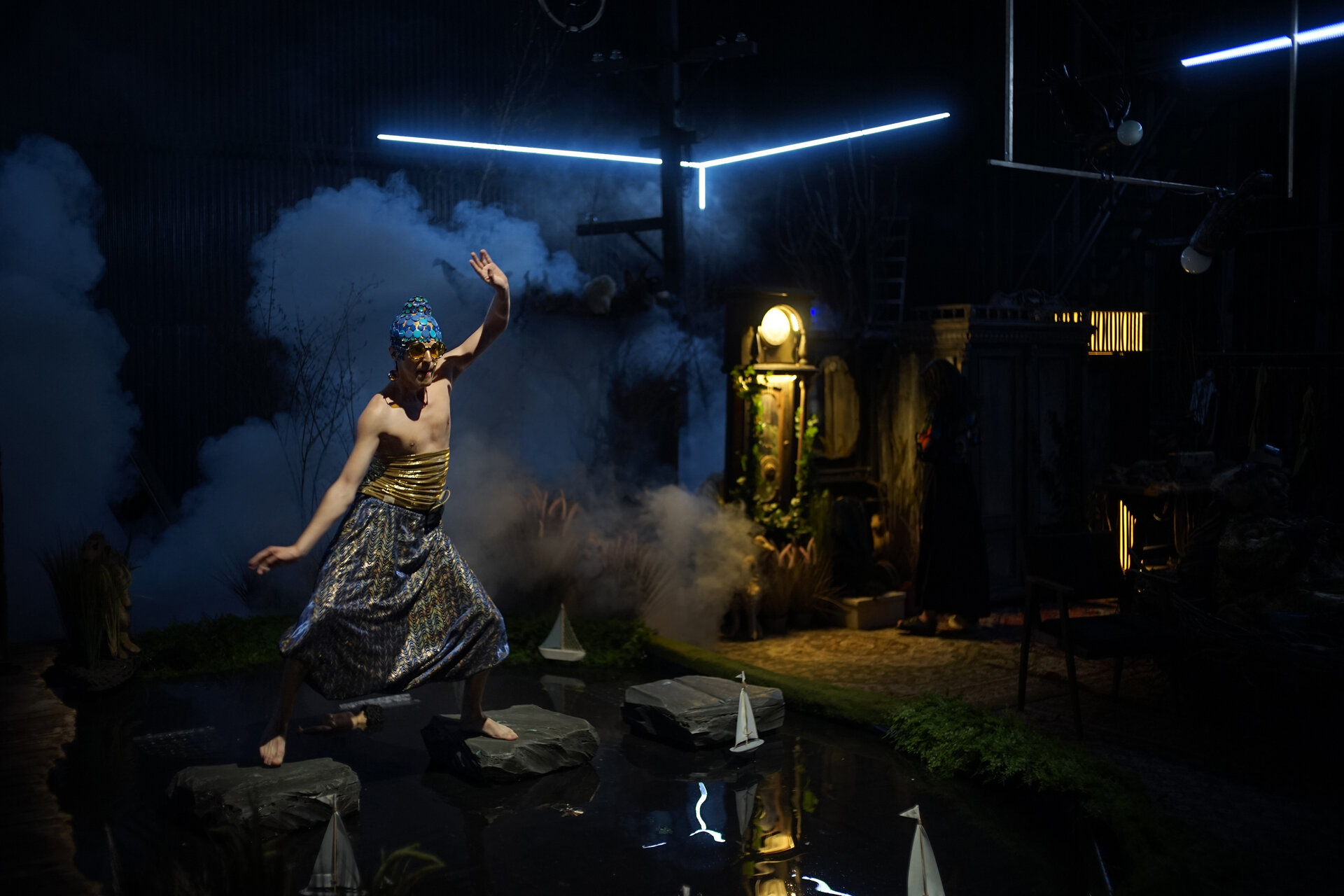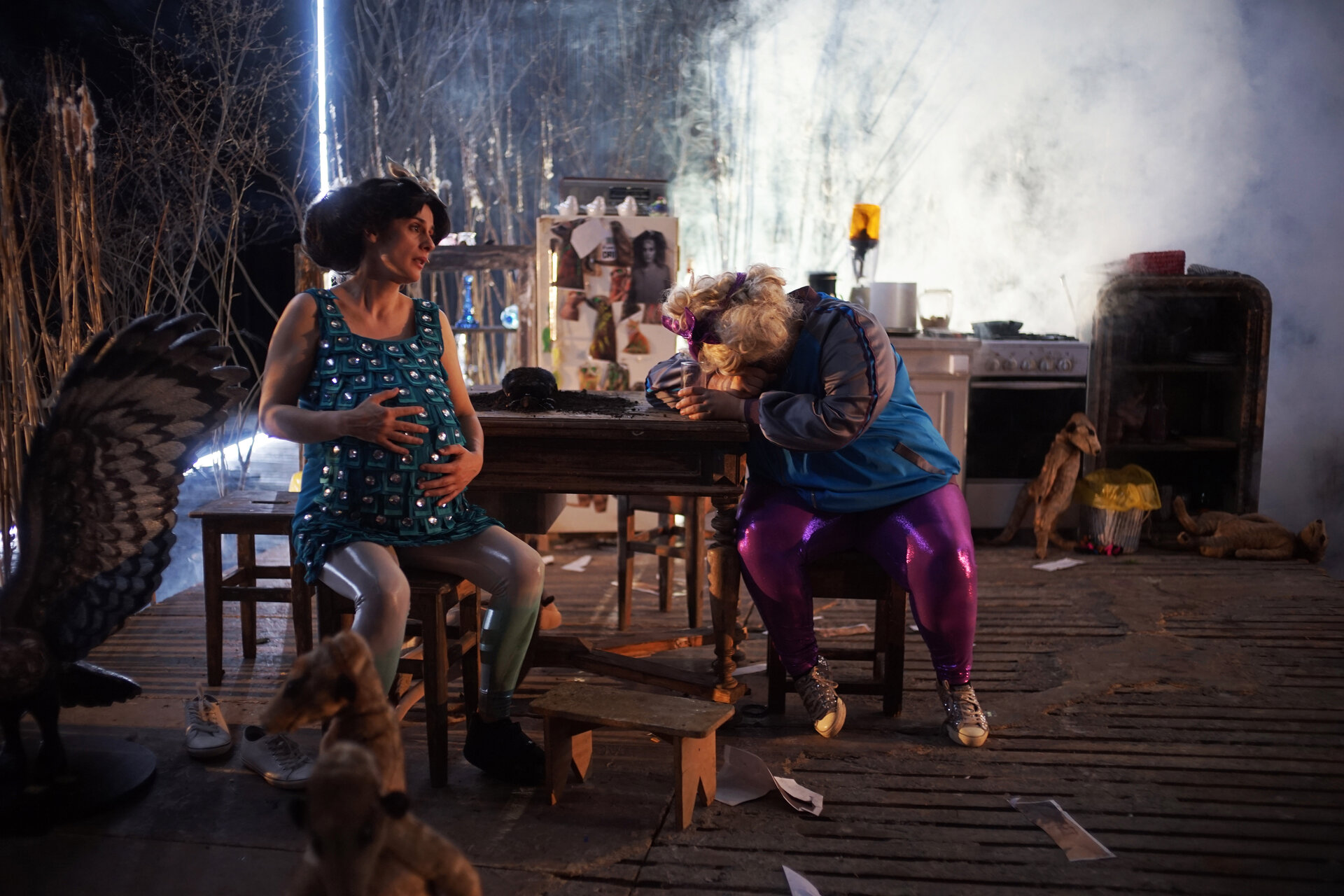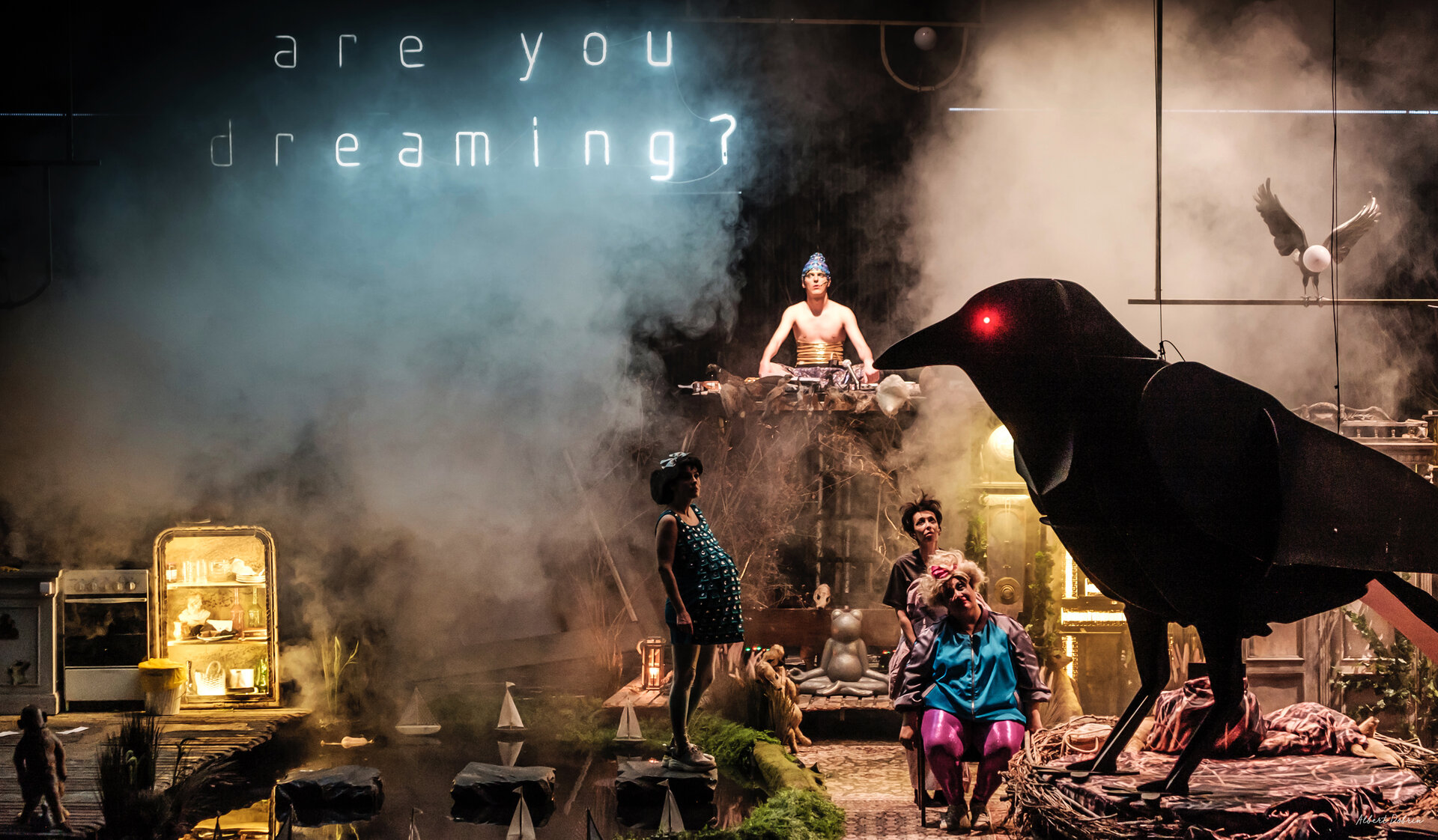
“Meerkats House” by David Drabek
Authors’ Comment
In a house full of meerkats, in addition to shoebill birds and a dead mole, live three sisters. The youngest sister is haunted by the memory of a crazy mother and hasn’t left the house for a year, since the sudden death of the father. The older one nestled in front of the TV and ate until she was immobilized. The middle sister is the only one who works to maintain the house. Above all this rules the spirit of a fake Buddha. The girls are trapped in this place. Three men appear in their lives and disrupt their existence.
"Meerkats House" by David Drabek directed by Radu Afrim at "Marin Sorescu" National Theater in Craiova has an extravagant universe. The scenography offers the amalgamated stories an optimal unfolding space, both functionally and expressively. The scenic image seems to be drawn moment by moment, and the convulsions of the emotional seem to become visible.
The space captures a dreamlike atmosphere in which the setting involves natural elements (water, grass), animals that seem to be in a state between life and death (meerkats that move, without being alive and whose appearance does not make you think of taxidermy ), an animated buddha located above things, somehow on the floor, bulb-eagles and a panel slowly descending and from which the white neon asks us "are you dreaming?". This is the image that gives way to this absurd dream, romantic, comical and nightmarish at the same time. It is a universe with real and unreal characters that coexist in a space on the edge of the imaginary, a world that suffocates in its own fears and fantasies.
Meerkat’s house is a built space invaded by nature, where the organic element makes its way over the furniture and props, taking over the whole house. In the middle of the broken and carpeted floors is a pond that visually divides the scene into three large sections – the kitchen, the living room and the bedroom. In the second plane is the forest, a place of escape and regeneration. Natural elements also have a functional role. The giant nest of a mysterious bird becomes a bed for one of the sisters, and the night birds become lighting fixtures. At the end, the appearance of an oversized black bird descending into the nest becomes a metaphor for the fulfillment of our fears. The organic element is broken by the geometric intervention of a luminous frame that reminds us that what we see is only a dream that annoyingly interferes with reality.
- Exhibition Design in 2 parts: Romanian Design Week 2020 / Central Exhibition & Diploma 2020
- Three Sisters. An (Un)usually Free Script Based on Chekhov
- Diploma 2019. Exhibition of architecture, art and design university graduates
- Pavilion Untold - Hamza X BT
- Leviathan. In the guts of the collection. Transformation of the second floor of the National Museum of Contemporary Art
- Year One. First Year. Model / Vocabulary / Tools
- Beyond the legend. Neagoe Basarab
- “Herbarium” after “The Book of Plants and Animals” by Simona Popescu
- “Meerkats House” by David Drabek
- The Bucharest of Mircea Eliade
- The Modern Idol. Henry Moore in the Eastern Bloc
- “Journey by Moonlight” after Antal Szerb
- MLMSN_IZO
- Batthyaneum. Astro-stories and mechanical animations
- Coronation Festivitie
- L'Année dernière à Malmaison
- From near to far. Visual mappings of the 2 Mai and Vama Veche space
- Smoke Screens
- Space within space
- Bildfahrzeuge (Image Vehicles). A Peter Jacobi Retrospective / National Museum of Contemporary Art
- Volume of a sleep
- Márta Jakobovits / The Road Travelled / National Museum of Contemporary Art
- This Museum is for you!
